- Luật
- Hỏi đáp
- Văn bản pháp luật
- Luật Giao Thông Đường Bộ
- Luật Hôn Nhân gia đình
- Luật Hành Chính,khiếu nại tố cáo
- Luật xây dựng
- Luật đất đai,bất động sản
- Luật lao động
- Luật kinh doanh đầu tư
- Luật thương mại
- Luật thuế
- Luật thi hành án
- Luật tố tụng dân sự
- Luật dân sự
- Luật thừa kế
- Luật hình sự
- Văn bản toà án Nghị quyết,án lệ
- Luật chứng khoán
- Video
- NGHIÊN CỨU PHÁP LUẬT
- ĐẦU TƯ CHỨNG KHOÁN
- BIẾN ĐỔI KHÍ HẬU
- Bình luận khoa học hình sự
- Dịch vụ pháp lý
- Tin tức và sự kiện
- Thư giãn

TIN TỨC
fanpage
Thống kê truy cập
- Online: 223
- Hôm nay: 198
- Tháng: 1621
- Tổng truy cập: 5245625
XEM XÉT LẠI VÀ ĐÁNH GIÁ ĐỘC LẬP DỰ ÁN KHU ĐÔ THỊ DU LỊCH LẤN BIỂN CẦN GIỜ
KIẾN NGHỊ XEM XÉT LẠI VÀ ĐÁNH GIÁ ĐỘC LẬP TOÀN BỘ DỰ ÁN KHU ĐÔ THỊ DU LỊCH LẤN BIỂN CẦN GIỜ - TPHCM

Kính gửi: Thủ tướng Chính Phủ nước CHXHCN Việt Nam
Ủy ban Thường vụ Quốc Hội nước CHXHCN Việt Nam
UBND Thành phố Hồ Chí Minh
Chúng tôi kí tên dưới đây, là các cá nhân và tổ chức xã hội yêu môi trường, hoạt động trong các lĩnh vực liên quan, đồng kiến nghị Thủ tướng Chính phủ, Ủy ban Thường vụ Quốc Hội, UBND TPHCM xem xét lại và đánh giá độc lập toàn bộ dự án Khu Đô thị du lịch lấn biển Cần Giờ 2.870 ha, vì những lí do sau đây:
1. Quyết định phê duyệt Báo cáo Đánh giá tác động môi trường dự án Khu Đô thị du lịch lấn biển Cần Giờ của Bộ Tài nguyên Môi trường cho thấy các tác động của dự án lên môi trường chưa được đánh giá khách quan, toàn diện. Đặc biệt, những vấn đề quan trọng nhất đã chưa được đánh giá đầy đủ trước khi phê duyệt, như: tác động của việc thực hiện dự án đến Khu Dự trữ sinh quyển rừng ngập mặn Cần Giờ, vấn đề xói lở, bồi tụ và dòng chảy các khu vực xung quanh dự án, các biện pháp giảm thiểu thích đáng các tác động tiêu cực của dự án.
Nguy cơ Khu Đô thị lấn biển Cần Giờ tác động xấu lên rừng ngập mặn Cần Giờ sẽ kéo theo hàng loạt ảnh hưởng tiêu cực khác lên khu vực đô thị TPHCM, nơi hiện tại người dân và chính quyền vốn đang phải đối mặt với nhiều gánh nặng về ô nhiễm môi trường, ngập lụt, sụt lún, v.v.
Về mặt khoa học và pháp lý, chỉ khi việc đánh giá các tác động về môi trường có thể xảy ra được thực hiện thấu đáo thì mới có thể quyết định thực hiện dự án hay không.
2. Xây dựng một dự án lấn biển khổng lồ ở Cần Giờ là vô cùng nguy hiểm trong bối cảnh biến đổi khí hậu đang diễn ra ngày một khốc liệt. Hiện nay khuynh hướng trên biển Đông đã xuất hiện nhiều cơn bão mạnh và xuống phía Nam nhiều hơn. Dự báo trong tương lai, những cơn bão lớn có ảnh hưởng trực tiếp lên khu vực TPHCM và Cần Giờ sẽ tăng cả về số lượng, mức độ và cường độ. Cần Giờ lại là vùng đất yếu, sẽ còn tiếp tục bị lún. Đã có nhiều nghiên cứu khuyến cáo không xây dựng đô thị lớn tại khu vực Cần Giờ trong thích ứng với biến đổi khí hậu.
Tuy nhiên, dự án Khu Đô thị du lịch lấn biển Cần Giờ 2.870 ha có diện tích lớn gấp hơn 6 lần diện tích khu đô thị Phú Mỹ Hưng, lớn gấp gần 4 lần khu đô thị Thủ Thiêm. Số dân cư dự kiến sống tập trung tại Khu Đô thị lấn biển Cần Giờ lên tới 230.000 người/2.870 ha, cao gấp hơn 3 lần số dân hiện tại của huyện Cần Giờ (khoảng 70.000 người/70.400 ha); chưa kể mục tiêu dự án sẽ đón gần 9 triệu lượt khách du lịch/năm. Đây là một đô thị lấn biển quy mô khổng lồ.
Việc xây dựng khu đô thị này là một rủi ro rất lớn về các vấn đề xói lở, ngập lụt, thoát nước, biến đổi hệ sinh thái, ảnh hưởng lớn đến môi trường và xã hội, phá hỏng quy hoạch vùng sinh thái Cần Giờ, đi ngược lại chiến lược “Cần Giờ là khu dự trữ sinh quyển của thế giới”, tạo sức ép vượt quá khả năng tài nguyên ở Cần Giờ có thể cung ứng, có nguy cơ trở thành gánh nặng cho ngân sách nhà nước và xã hội trong tương lai.
3. Cho đến nay chưa có một đánh giá đầy đủ, khách quan, độc lập nào về khả năng cung cấp cát san lấp, ảnh hưởng của nguồn cát san lấp dùng cho dự án. Để san lấp biển cần tới 137,6 triệu m3 cát, trong đó đa số cát san lấp dự kiến sẽ được khai thác tại các tỉnh Đồng bằng Sông Cửu Long (ĐBSCL), gồm sông Cửa Đại (Bến Tre), sông Tiền (Đồng Tháp), sông Hậu (Sóc Trăng). Hiện nay ĐBSCL vốn đang phải đối mặt với hạn hán, nước biển dâng, xâm nhập mặn, xói lở ngày càng nghiêm trọng, cùng nguy cơ bị “tan rã” do phù sa không về bởi các đập thủy điện trên dòng chính Mekong. Khai thác một lượng cát khổng lồ như dự tính sẽ tác động đến khu vực khai thác như thế nào? Có làm trầm trọng thêm nguy cơ tan rã của ĐBSCL hay không? Ai được? Ai mất? Ai phải trả giá cho số cát san lấp khổng lồ này? Những câu hỏi này cần được trả lời nghiêm túc.
4. TPHCM không hề có sức ép dân số đến mức cần đổ đất lấn biển. Khu Đô thị du lịch lấn biển Cần Giờ thực chất là một dự án địa ốc (với mật độ đất chức năng cho xây dựng công trình, hạ tầng, giao thông chiếm hơn 58%, diện tích dành cho cây xanh chiếm gần 17%, biển hồ nhân tạo chiếm hơn 25%). Một dự án địa ốc không cần thiết nhưng sẽ án ngữ mặt tiền ven biển, hạn chế và thậm chí có khả năng triệt tiêu quyền lợi thụ hưởng cảnh quan thiên nhiên của toàn bộ dân cư thành phố nói riêng và người dân từ nơi khác đến, là lợi bất cập hại.
Cần Giờ lại có địa hình thấp, có vị trí hứng chịu thiên tai đầu tiên của thành phố, có quá nhiều bất lợi trong xây dựng như vấn đề xói lở, sụt lún, nguy cơ vỡ đê, bồi lắng dòng chảy. Muốn bảo vệ dự án thì cần phải xây dựng một con đê biển khổng lồ dài khoảng 23km bao quanh với chi phí vô cùng tốn kém, v.v.
Trong khi đó, ngày nay thế giới đang có nhiều nghiên cứu về đô thị trên biển theo mục tiêu hiệu quả nhất nhằm giữ được hệ sinh thái vùng, như xây nhà, cơ sở hạ tầng nổi trên mặt nước, với tiền đầu tư rất lớn và tỉ lệ sử dụng đất rất thấp. Việc đổ đất lấn biển, nền đắp đất tạo cao độ như dự án Khu Đô thị du lịch lấn biển Cần Giờ chỉ là giải pháp thiển cận trong ứng phó với nước biển dâng về lâu dài, chưa kể nguy cơ gây nhiều tác động xấu đến hệ sinh thái, môi trường.
5. Theo Luật Tài nguyên môi trường Biển và Hải đảo, địa phương phải thiết lập danh mục hành lang bảo vệ bờ biển trước, theo đó mới quyết định đâu là khu vực cần được bảo vệ, đâu là khu vực có thể phê duyệt làm dự án phát triển kinh tế. Thế nhưng theo báo cáo giải trình của UBND TPHCM gửi Thủ tướng Chính phủ, khi thiết lập hành lang bảo vệ bờ biển Cần Giờ, thành phố sẽ “bố trí các hành lang phù hợp với phạm vi và không ảnh hưởng đến các nội dung dự án Khu Đô thị du lịch lấn biển Cần Giờ”. Điều này đi ngược với quy định của pháp luật hiện hành.
6. Cho đến nay vẫn chưa có một nghiên cứu đầy đủ về hiệu quả kinh tế - xã hội thực sự của dự án. Nếu được xây dựng, theo chủ đầu tư dự án là Vingroup, dự án dự kiến sẽ nộp ngân sách Nhà nước hàng năm khoảng 100 tỷ đồng (tính vào thời điểm năm 2016), bổ sung các khoản thu thuế khoảng 2.900 tỷ đồng mỗi năm, đồng thời bình quân mỗi năm đóng góp khoảng 3% tổng mức bán lẻ hàng hóa và doanh thu dịch vụ của thành phố. Tuy nhiên, những tính toán này thiếu vắng hoàn toàn những thiệt hại do những rủi ro, tác động xấu mà dự án có thể mang lại, trong đó có cả môi trường, kinh tế và nguy cơ phân hóa xã hội đối với cộng đồng dân cư địa phương với dân cư mới của khu đô thị.
7. Cần Giờ có vai trò đặc biệt quan trọng về môi trường sinh thái, về giao thông đường sông và đường biển, về an ninh quốc phòng đối với TPHCM, miền Đông Nam bộ. Cần đặt dự án Khu Đô thị du lịch lấn biển Cần Giờ trong tổng thể phát triển bền vững của Nam bộ và cả nước, chứ không thể coi là của riêng huyện Cần Giờ hay TPHCM. Tuy nhiên, dù chưa được đánh giá đầy đủ các tác động, dự án này đã được TPHCM cập nhật, đưa vào Quy hoạch chung của thành phố, cũng như đưa vào Quy hoạch phân khu địa bàn huyện Cần Giờ.
8. Mối liên kết giữa con người với thiên nhiên đang rạn vỡ. Chính từ đó, cuộc sống của chúng ta trở nên bất ổn với dịch bệnh và thiên tai xuất hiện ngày càng nhiều và nguy hiểm hơn. Các quốc gia trên thế giới hiện nay đang ngày càng quan tâm hơn và có hàng loạt cảnh báo về vấn đề này trong đại dịch COVID-19. Bản thân Thủ tướng Chính phủ Việt Nam cũng đã công khai cam kết “không đánh đổi môi trường, văn hóa và văn minh xã hội để lấy phát triển kinh tế”.
Vì những lý do nêu trên, chúng tôi kiến nghị Thủ tướng Chính phủ, Ủy ban Thường vụ Quốc Hội, UBND TPHCM:
Thứ nhất, theo Luật Bảo vệ môi trường hiện hành, đề nghị công khai minh bạch các thông tin, văn bản, quyết định về dự án, trong đó có Báo cáo đánh giá tác động môi trường dự án. Kênh thông tin này cần cụ thể, rõ ràng để mọi giới đều có thể tiếp cận được.
Thứ hai, trả lời thấu đáo được các vấn đề trong việc lập hành lang bảo vệ bờ biển Cần Giờ, ranh giới dự án đối với Khu Dự trữ sinh quyển Cần Giờ, các tác động đến môi trường, xã hội không chỉ trong vùng xây dựng dự án mà cả những vùng bị tác động gián tiếp chưa được làm rõ như đã nêu trên.
Thứ ba, tính toán lại toàn diện bài toán hiệu quả kinh tế bao gồm các yếu tố chi phí xã hội, môi trường do các nguy cơ, rủi ro mang lại. Phối hợp tối ưu hoá hệ sinh thái ngập mặn trong tạo ra giá trị gia tăng về nông ngư nghiệp cho người dân hiện hữu trong vùng, thay vì tạo ra sốt đất tại Cần Giờ như hiện nay.
Thứ tư, UBND TPHCM tạm dừng việc đưa dự án Khu Đô thị du lịch lấn biển Cần Giờ 2.870 ha vào điều chỉnh đồ án Quy hoạch chung thành phố đang thực hiện, cũng như tạm dừng đưa dự án vào Quy hoạch phân khu địa bàn huyện Cần Giờ, cho đến khi có những đánh giá đầy đủ, khách quan và độc lập về dự án lấn biển này.
Thứ năm, Thủ tướng Chính phủ chưa phê duyệt điều chỉnh Quy hoạch chung của TPHCM cho đến khi có những đánh giá đầy đủ, khách quan và độc lập về dự án khu Đô thị du lịch lấn biển Cần Giờ.
Thứ sáu, thiết lập một cơ chế tư vấn quyết định bảo đảm sự tham gia một cách thực chất của giới khoa học, của người dân và các địa phương trong vùng với sự chủ trì của một ủy ban cấp Chính phủ; không thể là việc riêng của TPHCM. Trước mắt cần tổ chức một hội thảo công khai có sự tham gia của mọi bên liên quan để lắng nghe, trao đổi các thông tin, vấn đề về dự án.
Cuối cùng, cần xác định rõ nguyên tắc: không quyết định khi không đủ dữ liệu, không làm khi không chắc an toàn.
----
Thông tin tóm tắt về dự án Khu Đô thị du lịch lấn biển Cần Giờ:
Ra đời cách đây hơn 18 năm, dự án Khu Đô thị du lịch lấn biển Cần Giờ (TPHCM) ngay từ đầu đã vấp phải nhiều phản đối của giới chuyên gia do nguy cơ tác động xấu tới Khu Dự trữ sinh quyển Cần Giờ.
Dự án có quy mô ban đầu là 821 ha, trong đó có 600 ha lấn biển. Ngày 12.6.2020, dự án đã được Thủ tướng Chính phủ phê duyệt điều chỉnh chủ trương đầu tư mở rộng thành 2.870 ha, với tên mới là Khu Đô thị du lịch lấn biển Cần Giờ.
Dự án Khu Đô thị biển Cần Giờ 2.870 ha, trong đó sẽ lấn biển 2.718 ha; nằm trải dài và án ngữ trên toàn bộ bờ biển của xã Long Hòa và thị trấn Cần Thạnh, huyện Cần Giờ, TPHCM, có chiều dài 13 km trên tổng số 20km bờ biển Cần Giờ.
Tổng trữ lượng cát san lấp cần cho dự án: 137,6 triệu m3.
Quy mô dân số dự án: 228.000 người, với mục tiêu 8.887 triệu lượt khách du lịch/năm.
Tổng vốn đầu tư dự án: 217.054 tỷ đồng, gồm vốn chủ sở hữu là 32.558 tỷ đồng (chiếm 15% tổng vốn đầu tư), vốn vay thương mại là 184.496 tỷ đồng (chiếm 85% tổng vốn đầu tư).
Thời gian thực hiện dự án: 50 năm, kể từ ngày được cấp quyết định chủ trương đầu tư.
Tiến độ thực hiện dự án: 11 năm, kể từ ngày được cấp quyết định chủ trương đầu tư.
Dự án do công ty cổ phần Đô thị Du lịch Cần Giờ - là một công ty con trong chuỗi các công ty kinh doanh bất động sản của công ty cổ phần Vinhomes, thuộc tập đoàn Vin Group - làm chủ đầu tư.
-----
Các bài báo về dự án Khu Đô thị du lịch lấn biển Cần Giờ trên báo chí trong và ngoài nước:
Người Đô Thị: https://nguoidothi.net.vn/lan-bien-can-gio-2-870-ha-chua-danh-gia-het-tac-dong-nhung-van-trinh-thu-tuong-phe-duyet-20253
Đất Việt: https://baodatviet.vn/dien-dan-tri-thuc/ba-van-de-trong-du-an-do-thi-du-lich-can-gio-3380664/
Viettimes: https://viettimes.vn/can-danh-gia-day-du-cac-tac-dong-den-sinh-quyen-rung-ngap-man-can-gio-va-dbscl-365256
The Straits Times: https://www.straitstimes.com/asia/se-asia/viet-reclamation-project-near-reserve-raises-concern
Mạng lưới Báo chí Trái đất:
https://earthjournalism.net/stories/science-be-damned-vietnams-rush-to-help-its-largest-conglomerate-build-a-tourist-city
https://earthjournalism.net/stories/vietnams-massive-ecotourism-charadeAsia
Nikkei:
https://asia.nikkei.com/Economy/Vietnam-speeds-up-big-projects-to-heal-economy-from-pandemic
https://asia.nikkei.com/Spotlight/Asia-Insight/Asia-risks-missing-green-economic-reset-after-coronavirus
----
DANH SÁCH ĐẠI DIỆN KIẾN NGHỊ KÈM THEO
(thứ tự ngẫu nhiên)
Nguyên Ngọc, nhà văn;
Ngô Bảo Châu, Giáo sư toán học;
Phạm Chi Lan, Chuyên gia Kinh tế độc lập;
Lê Xuân Thuyên, Tiến sĩ địa chất biển, chuyên gia địa chất, sinh thái - môi trường;
Ngô Viết Nam Sơn, Tiến sĩ khoa học, kiến trúc sư;
Nguyễn Thị Hậu, Tiến sĩ khảo cổ học;
Doãn Mạnh Dũng, Kĩ sư, nguyên Phó Chủ tịch, Tổng thư kí Hội Khoa học Kỹ thuật và Kinh tế Biển TPHCM (2006 - 2019);
Vũ Ngọc Long, Tiến sĩ sinh thái học, nguyên Viện trưởng Viện Sinh thái Miền Nam;
Nguyễn Lân Hiếu, PGS.TS-BS Y khoa, đại biểu Quốc hội (khóa 14 nhiệm kì 2016 - 2021 tại An Giang);
Nguyễn Vân Nam, Giáo sư, tiến sĩ luật;
Ngụy Thị Khanh, Người Việt Nam đầu tiên đạt giải môi trường quốc tế Goldman;
Đào Trọng Tứ, Tiến sĩ tài nguyên nước, Trưởng ban điều hành Mạng lưới Sông ngòi Việt Nam, chuyên gia thể chế, chính sách về tài nguyên môi trường;
Trần Tố Nga, công dân Việt Nam;
Lê Quỳnh, nhà báo;
Nguyễn Thùy Linh, Thạc sĩ chính sách công;
Sơn Đặng, kiến trúc sư;
Ngô Bích Đào, Tiến sĩ quy hoạch - sinh thái;
Trần Lương, họa sĩ;
Quỹ Hỗ trợ Phát triển Cộng đồng Sống Bền vững;
Mạng lưới Sông ngòi Việt Nam;
Trung tâm Phát triển Sáng tạo Xanh (GreenID);
Trung tâm Hành động và Liên kết vì Môi trường và Phát triển (CHANGE),
Nhóm The Forest Việt Nam.
--- ENGLISH VERSION
PETITION FOR THE REVIEW AND INDEPENDENT ASSESSMENT OF THE CAN GIO TOURIST CITY PROJECT IN HO CHI MINH CITY, VIETNAM
TO: The Prime Minister of the Government of the Socialist Republic of Vietnam
The Standing Committee of the National Assembly of the Socialist Republic of Vietnam
The People’s Committee of Ho Chi Minh City
We, the undersigned, are individuals and organizations passionate about the environment and active in relevant fields, petition the Prime Minister, the National Assembly and the People's Committee of Ho Chi Minh city to order a review and an independent assessment of the 2,870-hectare Can Gio Tourist City project, for the reasons below:
1. The Ministry of Natural Resources and Environment (MONRE)’s Decision to approve the Environmental Impact Assessment (EIA) report of the Can Gio Tourist City Project (the Project) reflected an incomprehensive assessment of the impacts that this project may have on the environment. The most important issues left unresolved in the EIA report include the impacts of the project on the Can Gio biosphere reserve, and on erosion, deposition and flow processes in nearby regions, as well as appropriate measures to mitigate these negative impacts.
The Project poses a serious threat on the Can Gio mangrove forest, which in turn may lead to a series of harm to the urban regions of HCMC, whose population and authority are already facing major environmental challenges such as pollution, floods and land collapses.
In both scientific and legal senses, a comprehensive assessment of its potential environmental impacts is an indispensable prerequisite to decide whether a project should be implemented.
2. Pursuing a gargantuan land reclamation project in Can Gio is extremely dangerous in the context of worsening climate change. Violent storms in the South China Sea have been on the rise in both frequency and intensity and moving Southward, including superstorms. This trend is predicted to continue in the future with more and stronger storms hitting HCMC and especially Can Gio. Can Gio is already vulnerable to erosions and collapses due to the low bulk density of its soil. Various climate change adaptation research has warned against the construction of large urban areas in the district.
However, the Project plans to cover an area six times the size of the Phu My Hung urban area, or four times that of the Thu Thiem urban area. It aims to accommodate 230,000 residents over 2,780 hectares of reclaimed land, more than three times the current population of Can Gio (70,000 residents over an area of 70,400 hectares), and to host more than 9 million tourist arrivals per annum. This is, in essence, a gigantic property development project.
The construction of this project poses enormous risks related to erosion, flooding and water stagnation, with grave environmental and social consequences. It also threatens the integrity of the Can Gio mangrove ecosystem, contradicting the nation’s commitment to protect the Can Gio biosphere reserve. Moreover, its demand for resources will likely strain the natural capacity of the region, making it a liability for the national budget as well as our society in the future.
3. No comprehensive, impartial and independent report has been conducted on the feasibility and potential impacts of the extraction of sand to provide for the Project. For land reclamation, the project developer estimated it would need 137.6 million m3 of sand, taken mostly from riverbeds in the Mekong Delta, including the rivers Cua Dai in Ben Tre, Tien in Dong Thap and Hau in Soc Trang. The delta, unfortunately, is already facing myriad threats including drought, rising sea levels, saltwater intrusion, erosion, and even the risk of eventual disintegration due to the impacts of hydropower dam projects along the mainstream of the Mekong. How will the extraction of this massive amount of sand affect the extraction areas? Will it exacerbate the disintegration risk of the Delta? Who will benefit from it and who will suffer its consequences? Who really shoulder the costs? These questions need to be considered seriously.
4. The current population pressure of HCMC is not as imminent as requiring the reclamation of new land. The Project is in essence a property development one. More than 58% of the project area is dedicated for buildings and urban and transportation infrastructure. Less than 17% is reserved for greenery, and an artificial lake takes up just above 25%. An unnecessary property development project that would hinder access to the coast, limit and potentially even preclude the right to enjoy the nature of HCMC's citizens and visitors, promises more harm than good.
Besides, Can Gio’s low elevation and vulnerable location make it the first district of HCMC to be hit by storms and other natural disasters. The area also features with myriad disadvantages for construction such as erosion, collapse, risk of dyke break, and alternation of ocean flows due to fluvial deposition. A 23-kilometer long sea dyke would be needed to protect the project site at exorbitant construction costs.
Meanwhile, around the world, various research has been conducted to optimize the planning of marine cities with floating buildings and infrastructures so as to preserve local ecosystems, with high investment budgets and low land use percentages. The Project’s method of reclaiming land is merely a myopic solution to long-term rising sea levels, not to mention its potential negative impacts on the local ecosystem and environment.
5. As stipulated in the Law on Sea and Island Natural Resources and Environment of Vietnam, local authorities are required to establish coastal protection corridors prior to determining which areas should be reserved for conservation and which could be considered for development projects. However, according to a report submitted to the Prime Minister by the HCMC People’s Committee, the establishment of the coastal protection corridor in Can Gio would “respect the scale and avoid affecting the activities of the [Can Gio Tourist City] project.” This goes against the law.
6. No comprehensive research has been conducted on the real social and economic efficiency of the project. According to the developer, upon its completion, the Can Gio land reclamation project would contribute about 100 billion VND annually to the national budget (2016 data). In addition to property taxes and fees amounting to 2,900 billion VND per annum, it would also contribute to approximately 3% of the city’s retail and services revenue. However, these calculations failed to take into account the Project’s potential adverse impacts on the environment, the economy, and the socioeconomic gap between local communities and new inhabitants of the “tourist city.”
7. For HCMC and the Southern region of Vietnam, Can Gio plays an instrumental role in terms of ecological environment, of river and marine transportation, and of national defense security. It is imperative to envision the Project in the overall context of sustainable development for the whole nation rather than just Can Gio District or HCMC. Yet, despite the lack of a comprehensive assessment of its impacts, the Project has been incorporated into the master plans of Can Gio District and of Ho Chi Minh City for the period until 2030.
8. The connection between human and nature is breaking, which threatens to destabilize our society with increasingly frequent and severe epidemics and natural disasters. Nations all over the world are grappling with these concerns, a fact reflected by a series of warnings raised during the Covid-19 pandemic. In the same vein, the Vietnamese Prime Minister himself has publicly committed to ‘not trade our environment, our culture and social civilization for economic development.'
For the reasons mentioned above, we petition the Prime Minister, the Standing Committee of the National Assembly and the People's Committee of HCMC to:
First, in accordance with the prevailing Law of Environmental Protection, make public all information, documents, decisions related to the Project, including its Environmental Impact Assessment report. The information distribution channel needs to be easily accessible to citizens from all walks of life.
Second, provide appropriate responses to concerns regarding the establishment of the coastal protection corridor of Can Gio, the border of the Project in relation to the Can Gio Biosphere Reserve, and the environmental and socioeconomic impacts of the Project on not only the project site but also on indirectly affected areas such as mentioned above.
Third, recalculate the economic efficiency of the Project to reflect the social and environmental costs associated with the risks posed by it. Explore options to leverage the mangrove ecosystem to add value to aquaculture production to create sustainable livelihood for local communities instead of making them vulnerable to property development speculation.
Fourth, refrain from integrating the Project into the forthcoming revised master plan of HCMC as well as of Can Gio District until a comprehensive, impartial and independent assessment of the Project has been completed.
Fifth, refrain from approving the revised master plan of HCMC until a comprehensive, impartial and independent assessment of the Project has been completed.
Sixth, establish a decision-making mechanism that guarantees the meaningful participation of scientists as well as citizens from relevant municipalities under the auspices of a national committee rather than a city-level committee. This could be started with a town hall meeting attended by all relevant parties to share and discuss information related to the Project.
Last, commit to these principles: no decision should be made without sufficient information and no project should be implemented with uncertainty about its impacts.
----
About the Can Gio Tourist City Project:
At the time of its inception more than 18 years ago, the Can Gio Land Reclamation Project of Ho Chi Minh City (HCMC) faced immediate opposition from experts due to its potentially adverse impacts on the Can Gio biosphere reserve.
The initial scale of the Project was 821 hectares, including 600 on reclaimed land. On June 16, 2020, the Project was approved for expansion into 2,870 hectares by the Prime Minister of Vietnam, under the new name Can Gio Tourist City.
The 2,870-hectare land reclamation project stretches over the entirety of the 13-kilometer coastline in Long Hoa Commune and Can Thanh Township of Can Gio District, whose coastline totals 20 kilometers in length.
Total amount of sand needed for land reclamation: 137.6 million m3.
Accommodation capacity: 228,000 residents and 8,887 tourist arrivals per annum.
Total investment capital: 217,054 billion VND, including 32,558 billion VND in owner's capital (or 15%), and 184,496 billion in borrowed capital (or 85%).
Project duration: 50 years from the date of approval.
Project implementation period: 11 years from the date of approval.
The owner of the project is Can Gio Tourist City Corporation, a real estate brand of Vinhomes JSC, an arm of Vietnamese conglomerate VinGroup.
-----
Coverage of the Can Gio Tourist City Project in Vietnamese and foreign newspapers:
Người Đô Thị (Urbanites): https://nguoidothi.net.vn/lan-bien-can-gio-2-870-ha-chua-danh-gia-het-tac-dong-nhung-van-trinh-thu-tuong-phe-duyet-20253
Đất Việt (Viet Land):https://baodatviet.vn/dien-dan-tri-thuc/ba-van-de-trong-du-an-do-thi-du-lich-can-gio-3380664/
Viettimes: https://viettimes.vn/can-danh-gia-day-du-cac-tac-dong-den-sinh-quyen-rung-ngap-man-can-gio-va-dbscl-365256
The Straits Times: https://www.straitstimes.com/asia/se-asia/viet-reclamation-project-near-reserve-raises-concern
Earth Journalism Network:
https://earthjournalism.net/stories/vietnams-massive-ecotourism-charade
https://earthjournalism.net/stories/science-be-damned-vietnams-rush-to-help-its-largest-conglomerate-build-a-tourist-city
Asia Nikkei:
https://asia.nikkei.com/Economy/Vietnam-speeds-up-big-projects-to-heal-economy-from-pandemic
https://asia.nikkei.com/Spotlight/Asia-Insight/Asia-risks-missing-green-economic-reset-after-coronavirus
---
SIGNATORIES OF THE PETITION
(in random order)
Nguyên Ngọc, Writer;
Ngô Bảo Châu, Professor of Mathematics;
Lê Xuân Thuyên, Ph.D. in Marine Geology, Expert in Geology, Ecological Environment Sciences;
Phạm Chi Lan, Independent Economic Expert;
Ngô Viết Nam Sơn, Ph.D. in Sciences, Architect
Nguyễn Thị Hậu, Ph.D. in Archaeology;
Doãn Mạnh Dũng, Engineer, former Deputy Director and Secretary General of Ho Chi Minh City Marine Sciences, Technology and Economics Association (2006-2019);
Vũ Ngọc Long, Ph.D. in Ecology, former Director of the Southern Institute for Ecology;
Nguyễn Lân Hiếu, Ph.D, Medical Doctor, Associate Professor, An Giang Province Representative at the 14th National Assembly of Vietnam (2016-2021);
Nguyễn Vân Nam, Professor, Ph.D. in Law
Đào Trọng Tứ, Ph.D. in Water Resources, Head of the Administrative Board of the Vietnam River Network, Expert in Policy and Environmental Resources;
Ngụy Thị Khanh, Vietnam's first Goldman Environmental prize recipient;
Trần Tố Nga, Vietnamese citizen;
Lê Quỳnh, Journalist;
Nguyễn Thùy Linh, Master in Public Policy;
Sơn Đặng, Architect;
Ngô Bích Đào, Ph.D in Urban Planning and Ecology;
Trần Lương, Visual Artist;
Sống Foundation;
Vietnam River Network (VRN);
Center for Green Innovative Development (GreenID);
Center for Action and Network for Environment and Development (CHANGE);
The Forest Vietnam.
Các bài viết khác
- Từ sự kiện Tổng biên tập báo TIME Greta Thunberg là Nhân vật của năm 2019 đến báo cáo Biến đổi khí hậu Phúc trình của IPCC báo động đỏ cho nhân loại 82021 (15.01.2020)
- Bài phát biểu Chào nước Mỹ của TT Trump 4/7/2020 (15.07.2020)
- Bất động sản trung tâm Tp.HCM trầm lắng, đô thị phía Đông tiếp tục là "điểm nóng" (15.07.2020)
- Hàng loạt quán trà sữa thuê mặt bằng 15.000 USD/tháng phải đóng cửa, sếp KPMG chỉ ra sai lầm của hầu hết doanh nghiệp Việt (15.07.2020)
- Cái giật mình ở khu trung tâm thương mại thành phố (15.07.2020)






















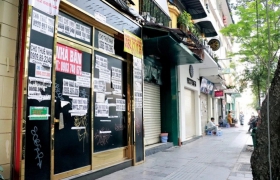
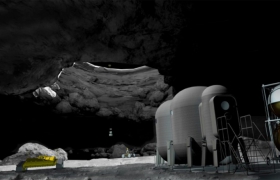
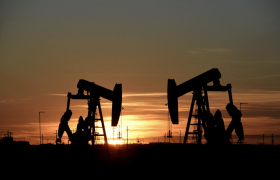
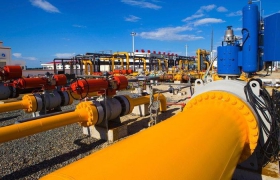

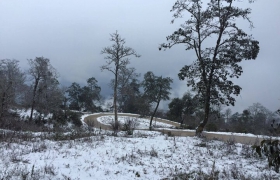


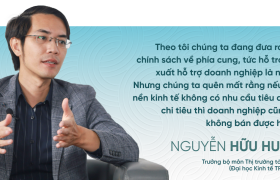
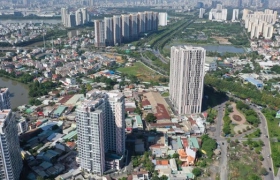
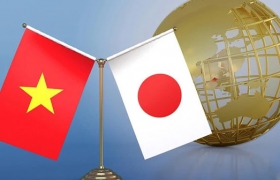









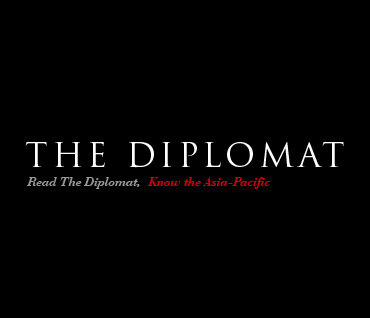

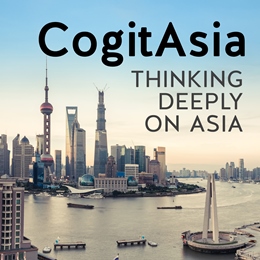

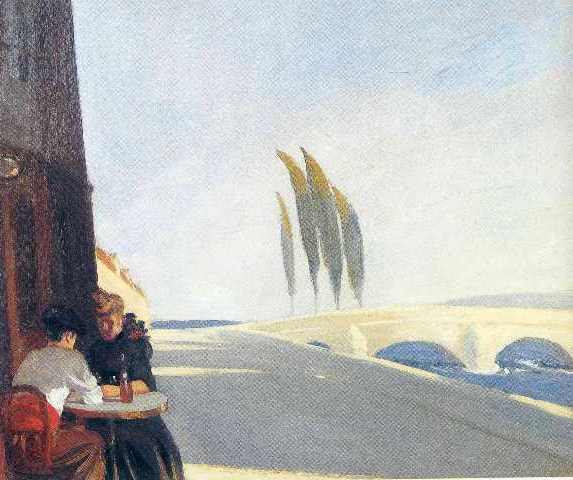



 Yahoo:
Yahoo: 